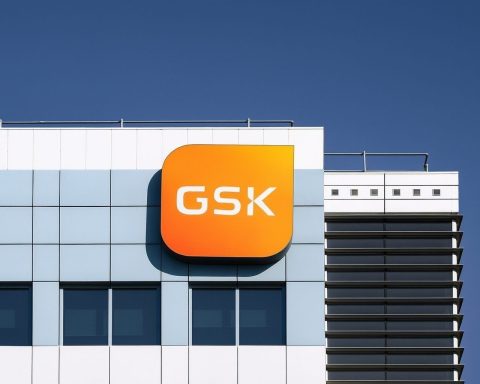Key Facts Summary
| Factor | Details |
|---|---|
| Stock price (Oct. 1 close / Oct. 2 pre‑market) | MicroStrategy stock (now branded Strategy) closed at $338.41 on Oct. 1 2025 and was trading around $348.33 pre‑market on Oct. 2 [1]. |
| Market capitalisation & fundamentals | Market cap ~$97 B; trailing‑12‑month revenue $462 M and net income $4.73 B [2]. |
| Analysts’ stance | 12 analysts rated MSTR a strong buy in Oct. 2025 with an average 12‑month price target of $495.17 (~46% upside) [3]. |
| Bitcoin holdings (Sept. 29 2025) | Strategy held 640,031 bitcoins with an average cost of $66,384 per BTC and a total cost basis of $33.139 B [4]. Recent purchases include 196 BTC on Sept. 29 and 850 BTC on Sept. 22 [5]. |
| Q2 2025 results & fair‑value gain | Strategy recorded $14 B unrealized fair‑value gain on Bitcoin in Q2 2025 and swung to a $9.97 B net profit; it held 597,325 BTC at an average cost of $70,982 [6]. |
| Capital raising / credit products | The company raised $6.6 B via an at‑the‑market equity program, $2 B via convertible notes and $1.4 B from new preferred stock (“Strike” and “Strength”) in early 2025 [7]. It launched the perpetual preferred instrument Stretch (STRC) in July 2025, raising $2.521 B with a targeted 9% yield and price‑stabilization mechanisms [8] [9]. |
| Rebranding | In Feb. 2025 the company formally rebranded as Strategy to emphasise its mission as “the world’s first and largest Bitcoin treasury company” [10]. |
| S&P 500 exclusion | Despite meeting technical criteria, Strategy was not added to the S&P 500 in the Sept. 2025 rebalance; high volatility and its heavy reliance on Bitcoin were cited as reasons [11] [12]. |
| Bitcoin price outlook (Oct. 2 2025) | Citi analysts trimmed their year‑end Bitcoin target to $133,000 while forecasting $181,000 within twelve months [13] [14]. |
In‑Depth Analysis
Stock Performance as of Oct. 2 2025
MicroStrategy’s share price has been extremely volatile because the company’s value is tied to Bitcoin. After falling through the summer, shares rebounded strongly in late September as Bitcoin prices firmed. On Oct. 1 the stock rose 5.03 percent from $322.21 to $338.41, trading between $331.20 and $343.73 during the session [15]. Analysts at StockInvest observed that trading volumes were higher than normal and, although the stock had declined in six of the previous ten days, it remained up about 2.6 percent over two weeks [16].
Pre‑market quotes on Oct. 2 placed the stock around $348.33, suggesting investor optimism ahead of the open [17]. Technical forecasts predicted an intraday trading range between $330.37 and $346.45 with near‑term support at $336.57 and resistance at $349.12 [18]. Despite describing the overall trend as falling, the same analysis upgraded MSTR from hold to buy because both short‑ and long‑term moving averages signaled upward momentum [19].
MicroStrategy remains one of Wall Street’s highest‑beta stocks. The company’s heavy reliance on Bitcoin means its shares often amplify the cryptocurrency’s movements. Investopedia noted that MicroStrategy’s beta was around 3.83—a level of volatility that likely influenced the S&P 500 committee’s decision to exclude the company from the index [20]. Even so, 12 analysts rated the stock a strong buy with an average price target of $495.17 [21].
Company News and Strategic Developments
A pivot to Bitcoin treasury and corporate rebrand
MicroStrategy’s transformation from a business‑intelligence software vendor into a Bitcoin treasury company has been dramatic. In Feb. 2025 the firm officially changed its corporate name to Strategy with a new logo proclaiming it as “the world’s first and largest Bitcoin Treasury Company” [22].
The rebrand accompanied a strategy to issue structured products backed by Bitcoin. CEO Phong Le explained on the Q1 2025 call that the company raised $6.6 B via an at‑the‑market stock program, $2 B via convertible notes and $1.4 B through new preferred shares—funds used primarily to accumulate more Bitcoin [23]. Strategy also launched a suite of digital credit products (Stride, Strike, Strife, and Stretch (STRC)). The new Stretch preferred stock, introduced July 21 2025, is a perpetual instrument backed by Bitcoin. It pays a target 9 percent yield distributed monthly and uses price‑control mechanisms—adjusting dividends and offering an at‑the‑market issuance facility—to keep its trading price near $100 [24] [25]. The product sits above common stock but below senior debt, providing investors with higher security yet still linked to Bitcoin volatility [26]. By August 2025, Stretch had raised about $2.521 B and was covered by 628,791 unencumbered bitcoins with an asset‑coverage ratio of 14×—enough to pay dividends for 180 years even if Bitcoin fell 75 percent [27].
Earnings and financial performance
The adoption of fair‑value accounting for digital assets materially changed Strategy’s earnings. In Q2 2025 the company posted a $14 B unrealized fair‑value gain on Bitcoin and swung from a $102.6 M loss a year earlier to a net profit of $9.97 B [28]. As of June 30 it held 597,325 bitcoins purchased at an average cost of $70,982 [29].
Q4 2024 results, reported in February 2025, had been much weaker. Strategy recorded a fourth consecutive quarterly loss of $670.8 M due largely to a $1.01 B impairment on its Bitcoin holdings [30]. However, management used the quarter to ramp up its Bitcoin buying—purchasing 218,887 bitcoins (cost $20.5 B) and announcing plans to raise $42 B over three years for additional purchases [31].
In Q1 2025 the company continued to add to its reserves, acquiring 106,085 BTC at an average cost of $93,600 and raising capital through stock offerings and convertible notes [32]. Phong Le highlighted that all Bitcoin holdings remain unencumbered—meaning no debt is secured by the crypto—and that the company’s stash represents roughly 2.6 percent of all bitcoins in existence [33].
State and Valuation of Bitcoin Holdings
As of Sept. 29 2025, Strategy held 640,031 bitcoins with an average acquisition cost of $66,384 per coin and a total cost basis of about $33.139 B [34]. During September the firm continued to buy aggressively, adding 196 BTC on Sept. 29 and 850 BTC on Sept. 22 [35]. At that time Bitcoin traded near $114,000, implying Strategy’s holdings were worth roughly $73 B, significantly higher than its cost basis.
The company’s adoption of fair‑value accounting means that changes in Bitcoin price directly affect reported earnings. When Bitcoin rallied sharply in the first half of 2025, this new accounting produced a $14 B unrealized gain [36]. Conversely, if Bitcoin prices decline, the fair‑value adjustments could generate losses similar to the impairment recorded in Q4 2024 [37].
Analysts’ and Experts’ Commentary
Michael Saylor, Strategy’s executive chairman, has remained one of Bitcoin’s most vocal proponents. In July 2025, after posting record profits, he declared that the world was in a “hyper‑growth, hyper‑adoption phase for bitcoin as a treasury reserve asset” [38]. At an H.C. Wainwright conference, Saylor framed Bitcoin as “digital capital,” Strategy stock as “digital equity,” and the company’s suite of credit instruments as an innovative form of digital credit that aims to reshape capital markets. He argued that Bitcoin’s scarcity and deflationary nature make it the world’s premier store of value, while the company’s shares and credit products offer leveraged exposure to that scarcity [39].
Financial media and analysts have been less uniformly bullish. Investopedia reported that the S&P 500 index committee passed over MicroStrategy during its September 2025 rebalance despite the company meeting eligibility requirements [40]. Analysts speculated that high volatility, a beta near 4 and heavy reliance on Bitcoin reduced the stock’s appeal for index inclusion [41].
Citi analysts trimmed their year‑end target for Bitcoin to $133,000 while raising their ether target to $4,500, arguing that investor flows were favouring ether in late 2025 [42]. They still saw upside ahead, projecting Bitcoin could reach $181,000 within 12 months if investor demand stays strong; however, they warned that a global recession could push the cryptocurrency down to $83,000 [43]. Such forecasts highlight the uncertainty surrounding Strategy’s core asset.
Market Sentiment and Investor Reaction
Investors appear divided. The stock’s high volatility and close correlation with Bitcoin mean it can experience dramatic swings—both positive and negative. The 46 percent upside implied by analysts’ price targets and the buy rating from technical analysts reflect confidence that Bitcoin’s long‑term trajectory is upward [44] [45]. Bulls point to Strategy’s expanding Bitcoin reserves, innovative capital‑raising instruments and early profits from fair‑value accounting.
Sceptics emphasise that the company’s fundamental software business has become tiny relative to its cryptocurrency holdings. In Q2 2025 Strategy sold only $114 M of software but bought $6.7 B worth of Bitcoin [46]. They argue that the stock functions more like a leveraged Bitcoin fund than a diversified tech company. The risk is heightened by the company’s long‑term debt and preference shares, which could pressure returns if Bitcoin’s price falls sharply.
Comparisons & Industry Insights
MicroStrategy’s transformation has inspired other corporations to hold Bitcoin, but no peer matches its scale. The company holds over 640,000 bitcoins, far exceeding Tesla’s holdings (roughly 10,000) or Block’s (around 8,000). Its strategy has also led to financial innovations; the Stretch preferred stock and earlier instruments like Strike are among the first large‑scale credit products backed by Bitcoin.
More broadly, 2025 saw greater interest in Bitcoin treasury strategies. Citi’s forecasts and the introduction of U.S. spot Bitcoin ETFs earlier in the year led to robust institutional flows, though by October investors were pivoting to ether [47]. MicroStrategy remains at the center of this ecosystem; its share price will likely continue to act as a high‑beta proxy for Bitcoin.
Conclusion
By Oct. 2 2025 MicroStrategy—now Strategy—had fully reinvented itself as a Bitcoin treasury behemoth. The company amassed 640,031 bitcoins worth around $73 B [48], launched innovative credit instruments like Stretch to raise billions in capital [49], and adopted fair‑value accounting that produced a $14 B unrealized gain in Q2 2025 [50]. Its stock traded near $348 pre‑market and continued to be a volatile yet attractive proxy for Bitcoin [51].
The company’s fortunes now rise and fall with the cryptocurrency market. Supporters see a visionary bet on digital scarcity and applaud Strategy for pioneering bitcoin‑backed credit products. Detractors warn that the firm’s shrinking software business and outsized leverage make it riskier than many investors appreciate. As Bitcoin adoption expands and regulatory frameworks evolve, MicroStrategy’s bold experiment will remain a focal point for both crypto enthusiasts and traditional investors seeking exposure to digital assets.
References
1. stockanalysis.com, 2. stockanalysis.com, 3. stockanalysis.com, 4. bitbo.io, 5. bitbo.io, 6. www.reuters.com, 7. mlq.ai, 8. www.ccn.com, 9. www.ccn.com, 10. www.reuters.com, 11. www.investopedia.com, 12. www.investopedia.com, 13. www.reuters.com, 14. www.reuters.com, 15. stockinvest.us, 16. stockinvest.us, 17. stockanalysis.com, 18. stockinvest.us, 19. stockinvest.us, 20. www.investopedia.com, 21. stockanalysis.com, 22. www.reuters.com, 23. mlq.ai, 24. www.ccn.com, 25. www.ccn.com, 26. www.ccn.com, 27. www.ccn.com, 28. www.reuters.com, 29. www.reuters.com, 30. www.reuters.com, 31. www.reuters.com, 32. mlq.ai, 33. mlq.ai, 34. bitbo.io, 35. bitbo.io, 36. www.reuters.com, 37. www.reuters.com, 38. www.reuters.com, 39. blockchain.news, 40. www.investopedia.com, 41. www.investopedia.com, 42. www.reuters.com, 43. www.reuters.com, 44. stockanalysis.com, 45. stockinvest.us, 46. www.investopedia.com, 47. www.reuters.com, 48. bitbo.io, 49. www.ccn.com, 50. www.reuters.com, 51. stockanalysis.com









